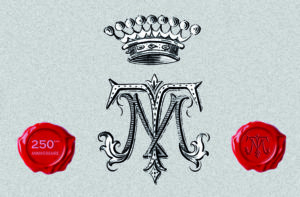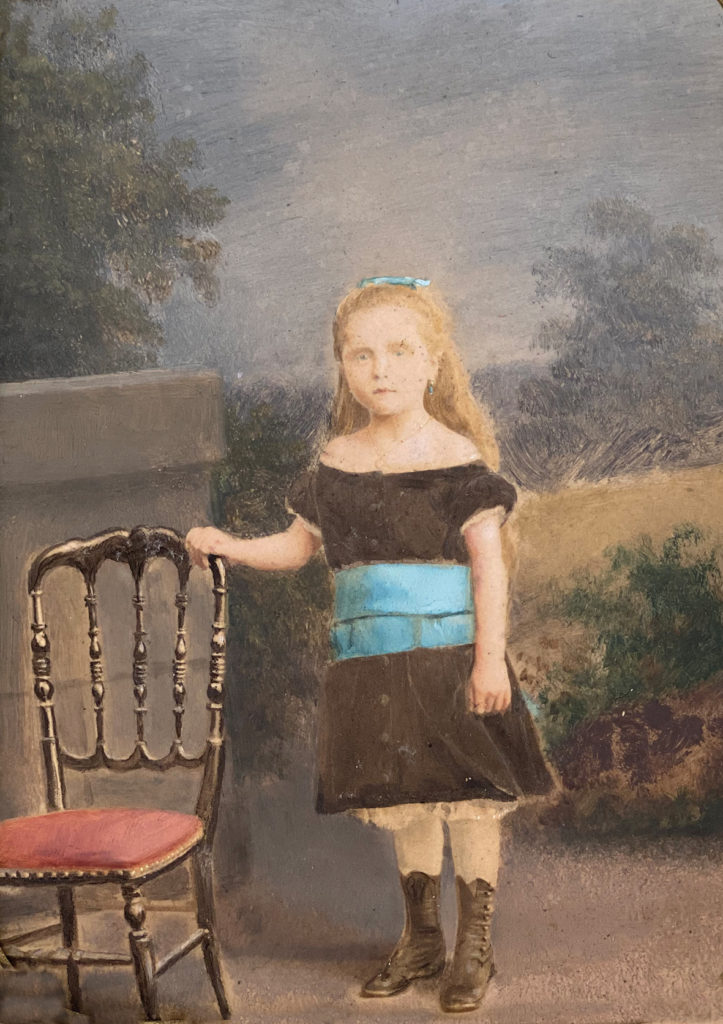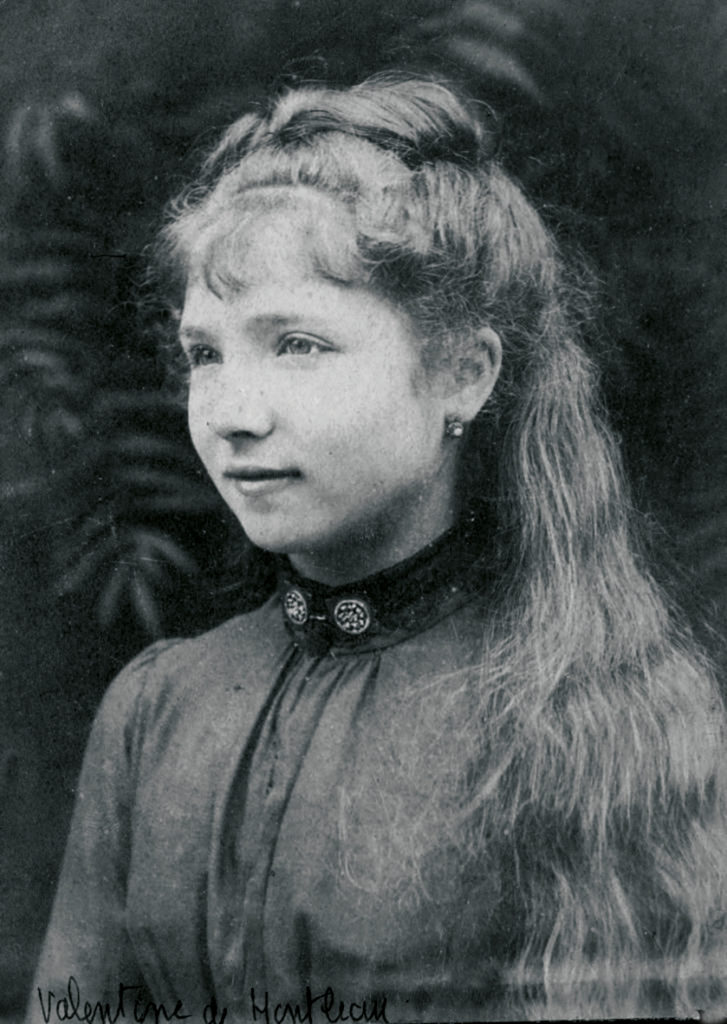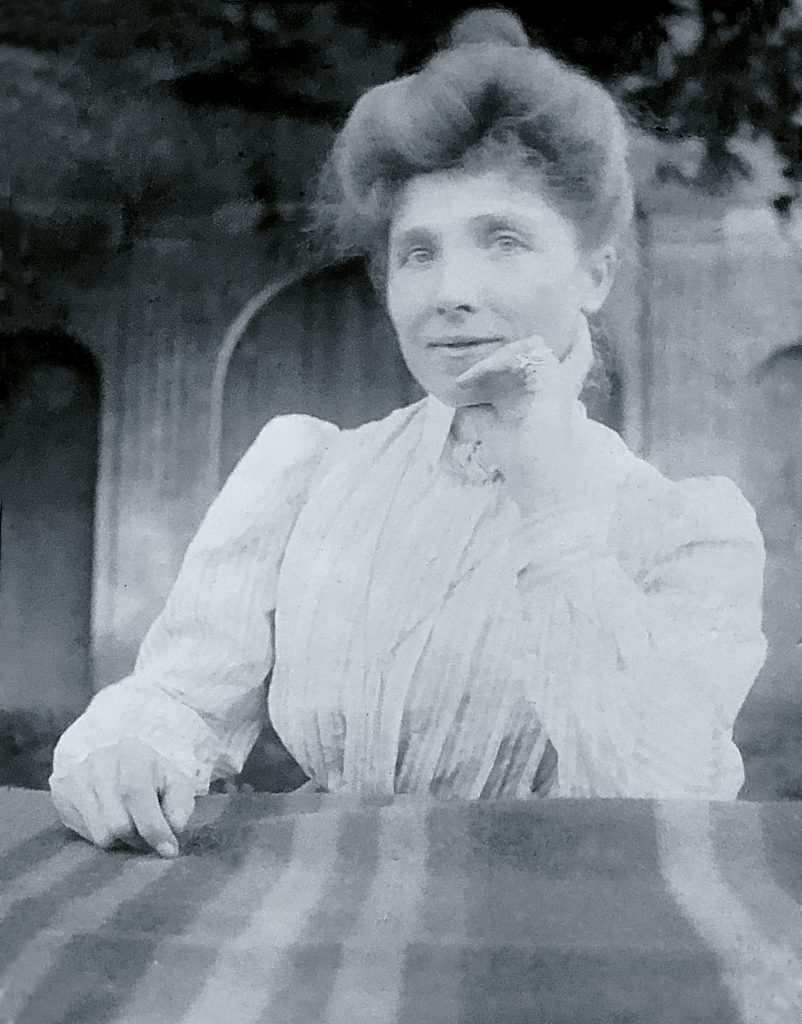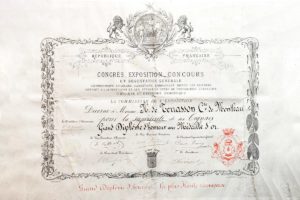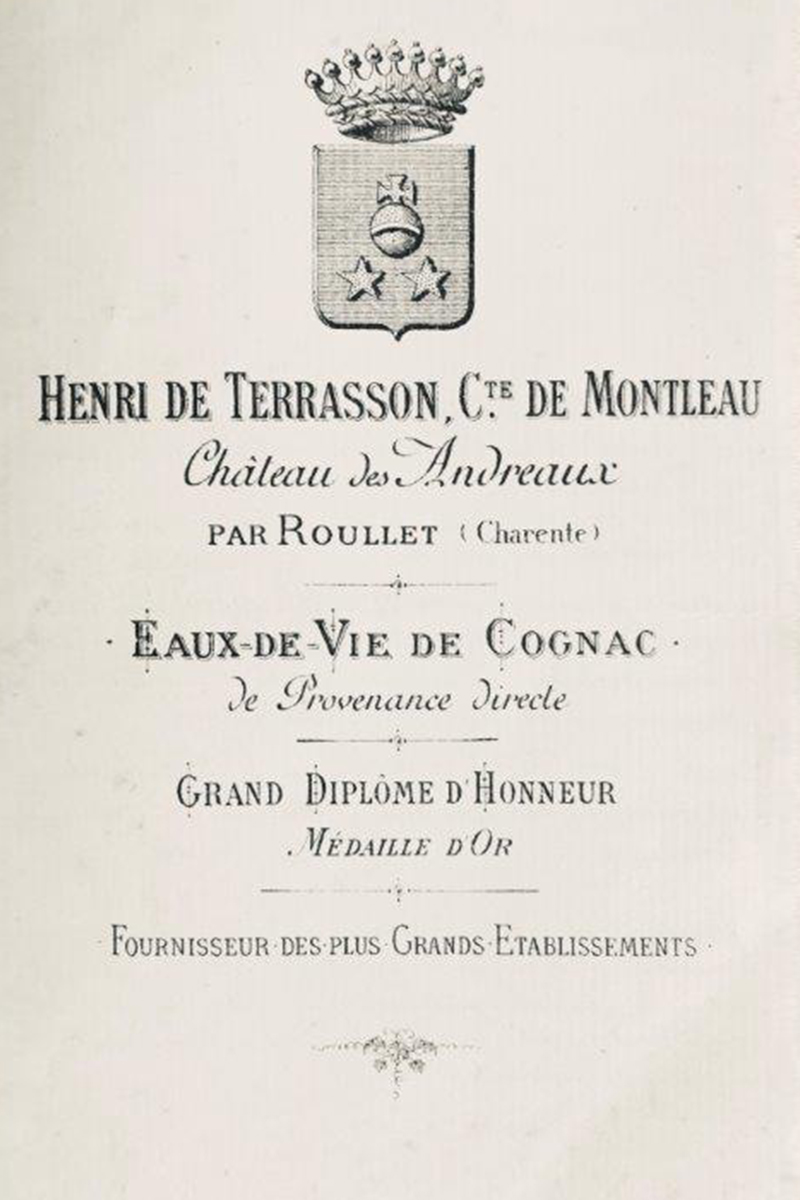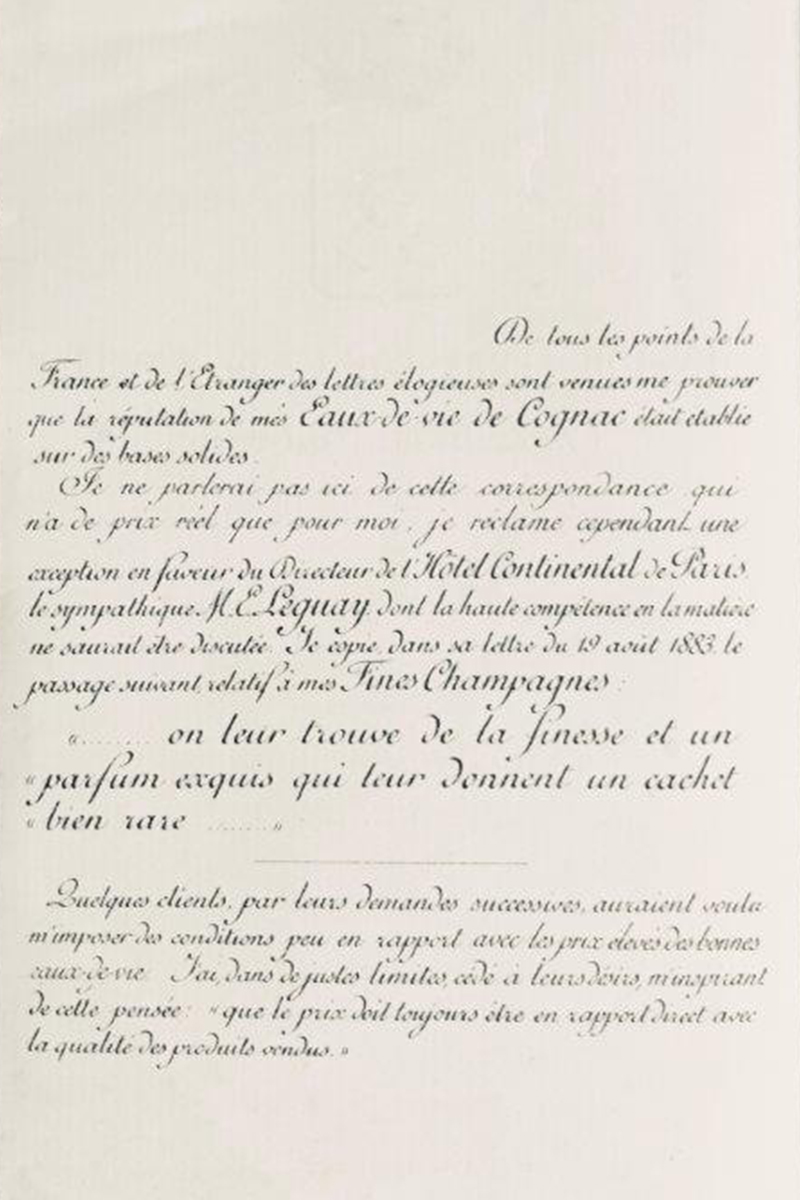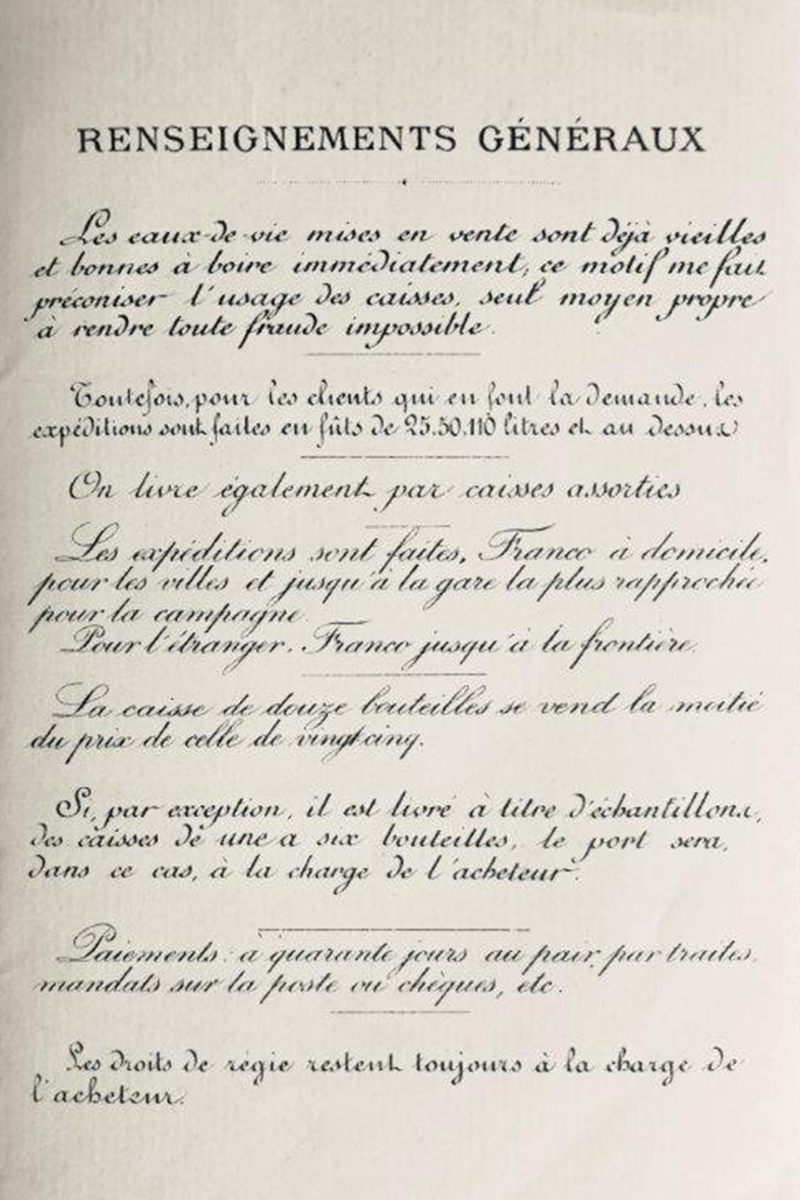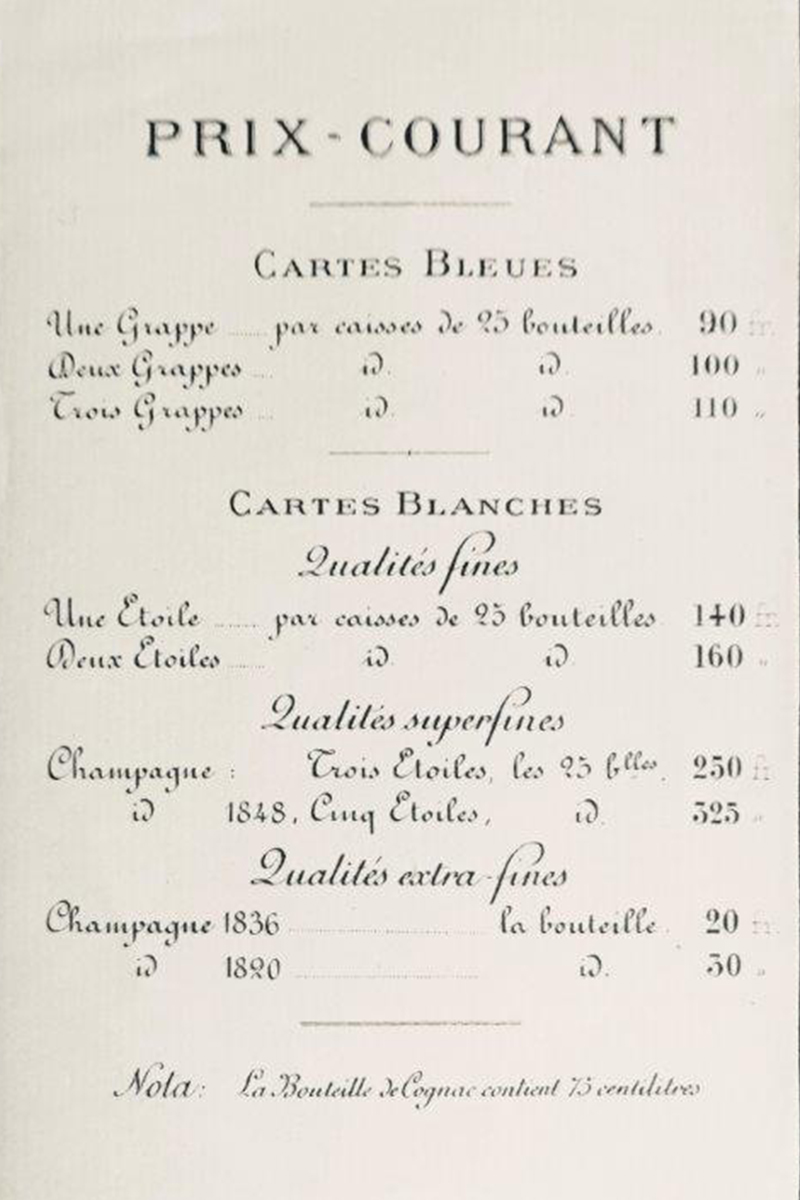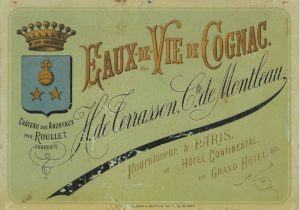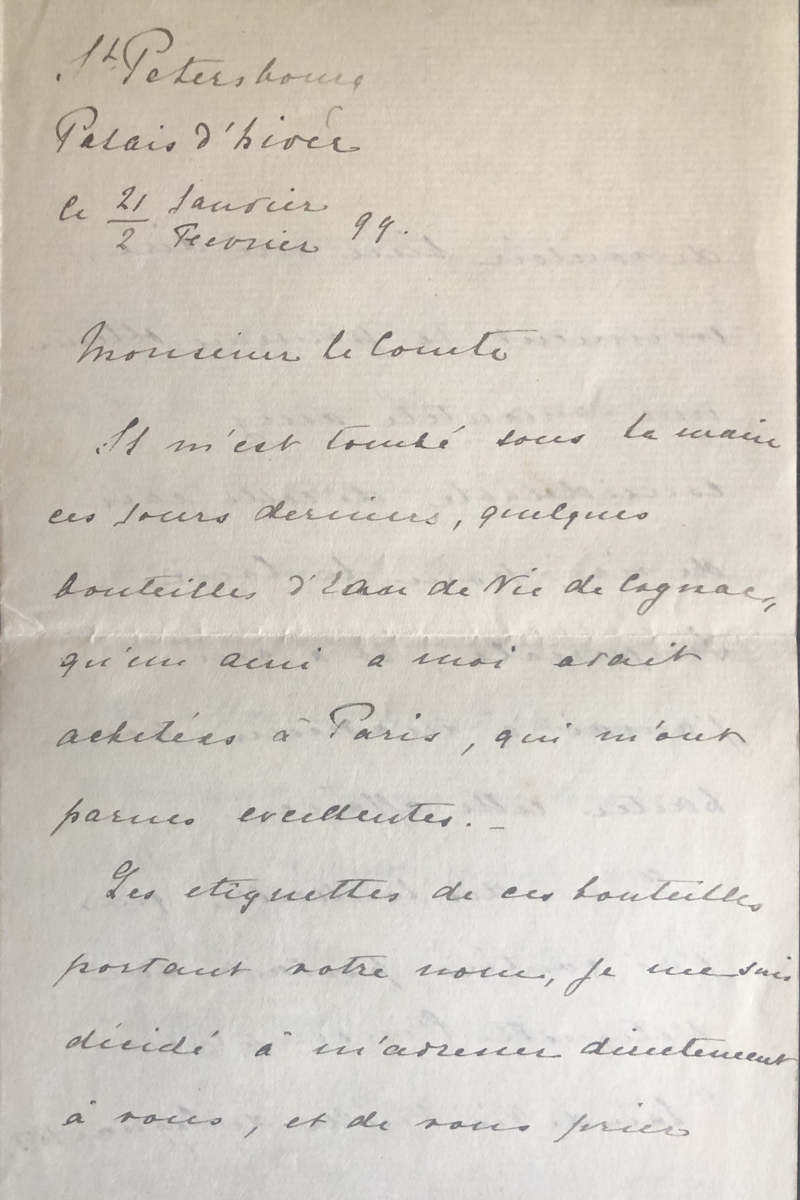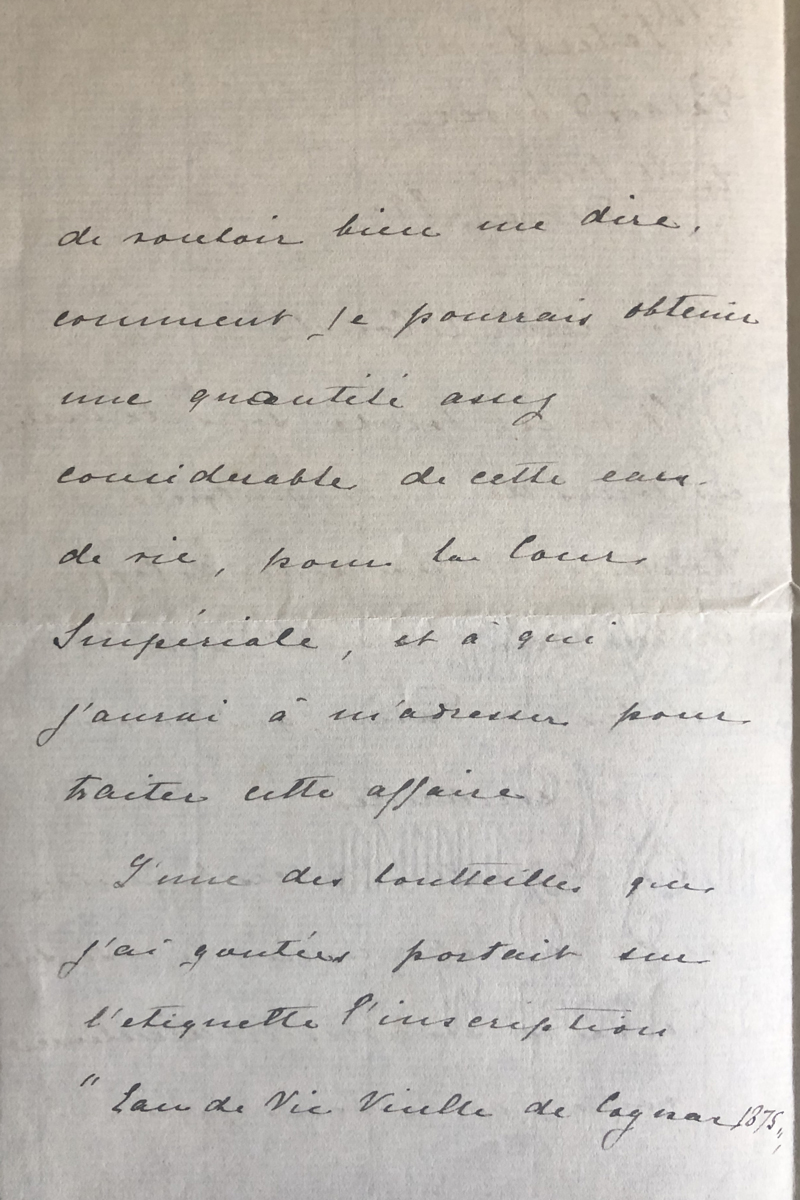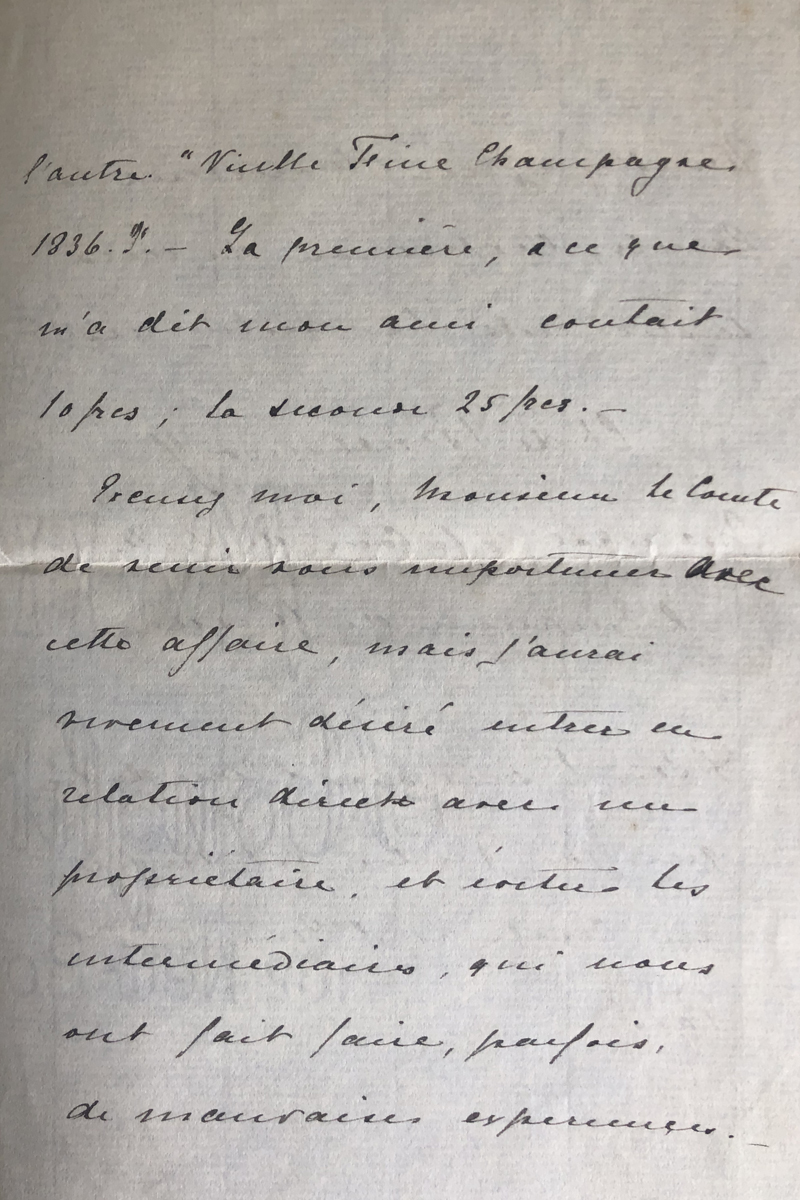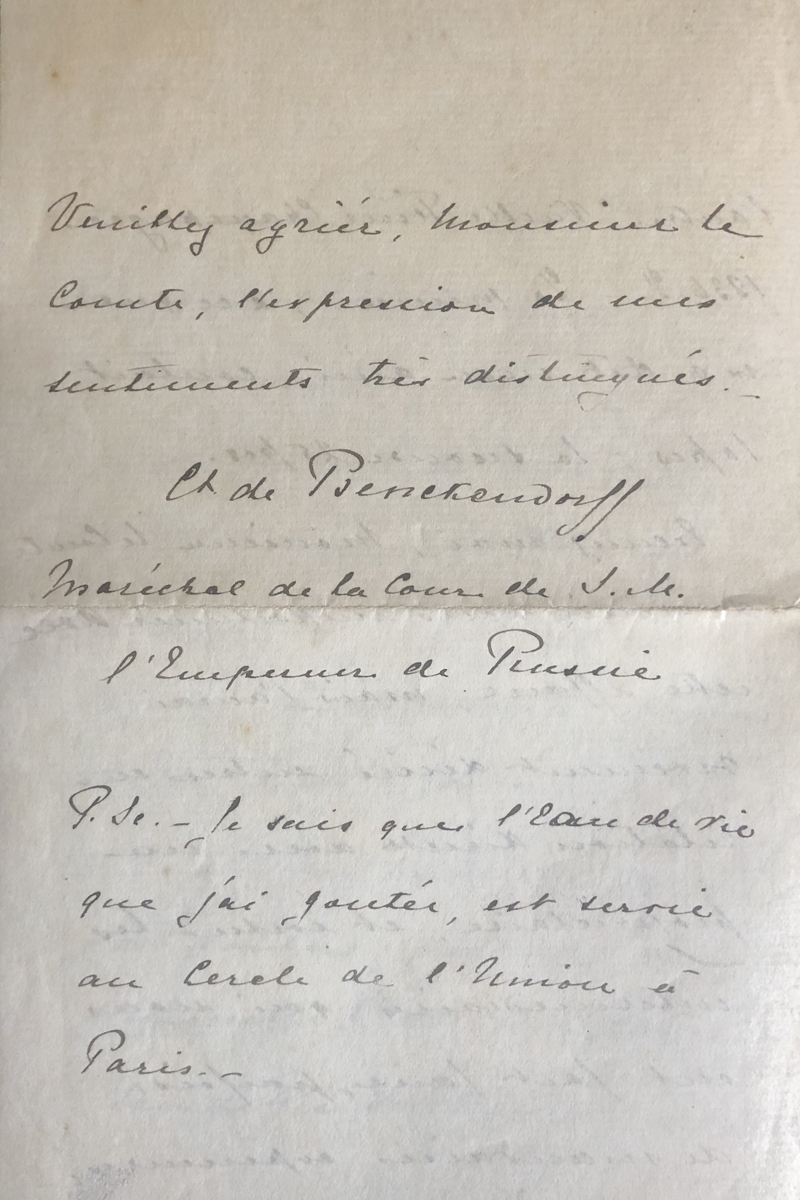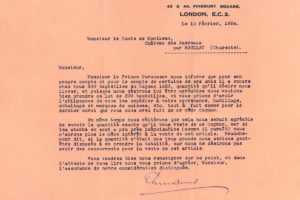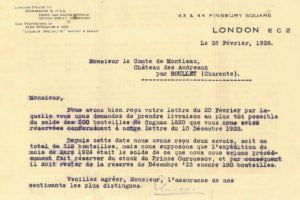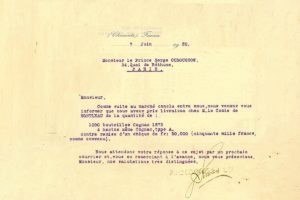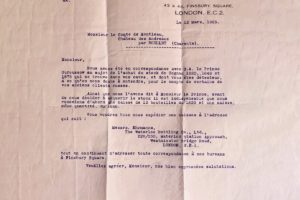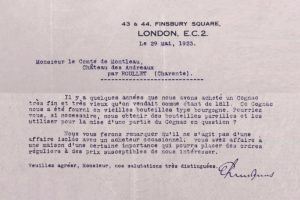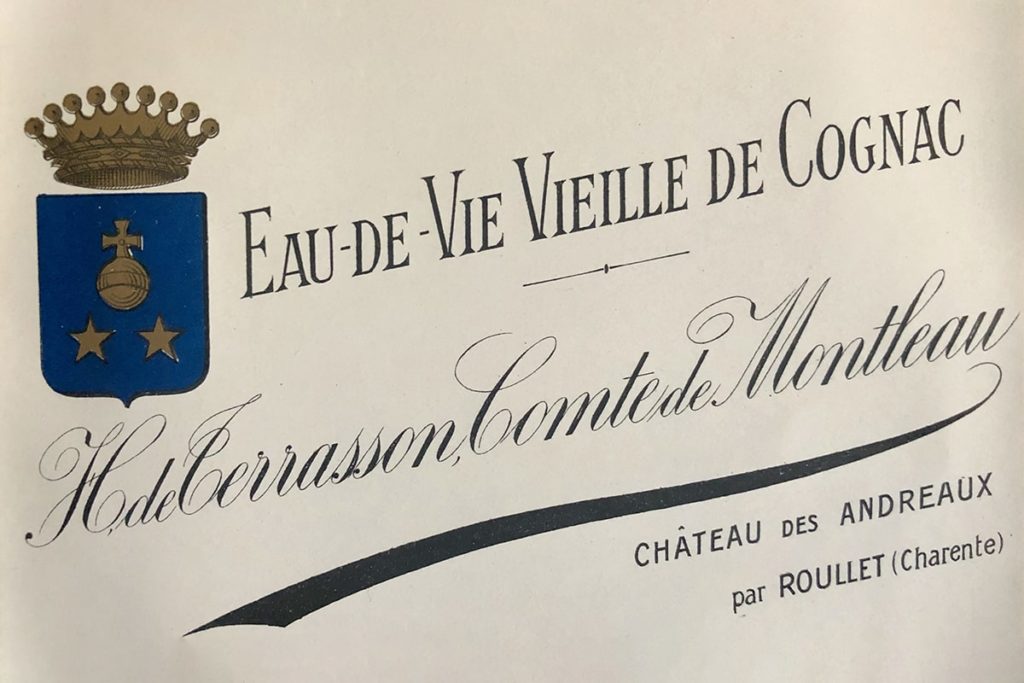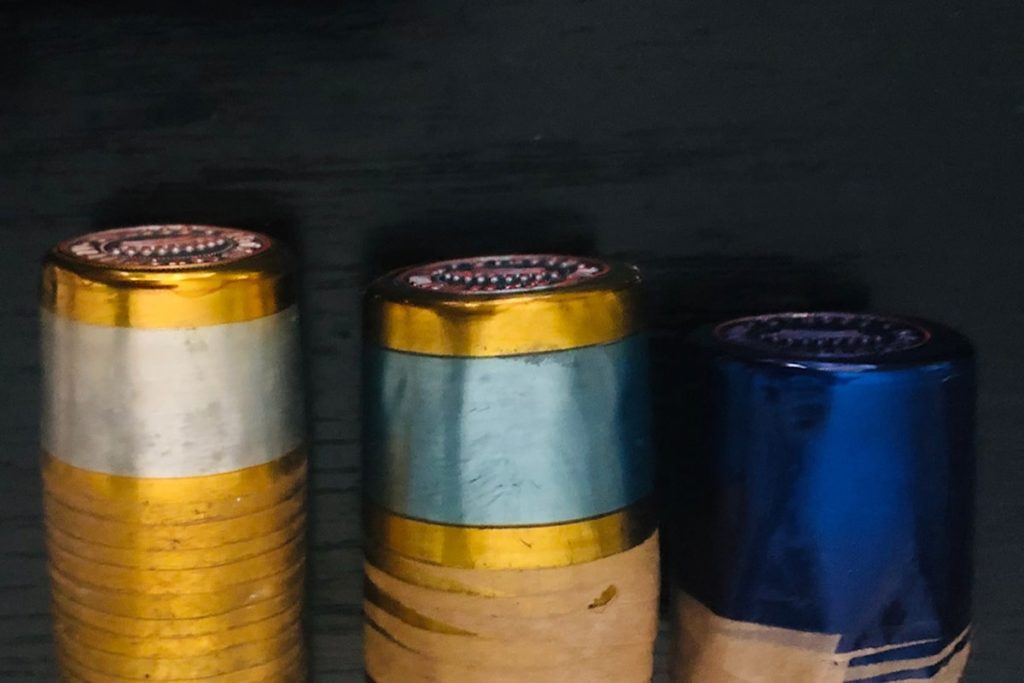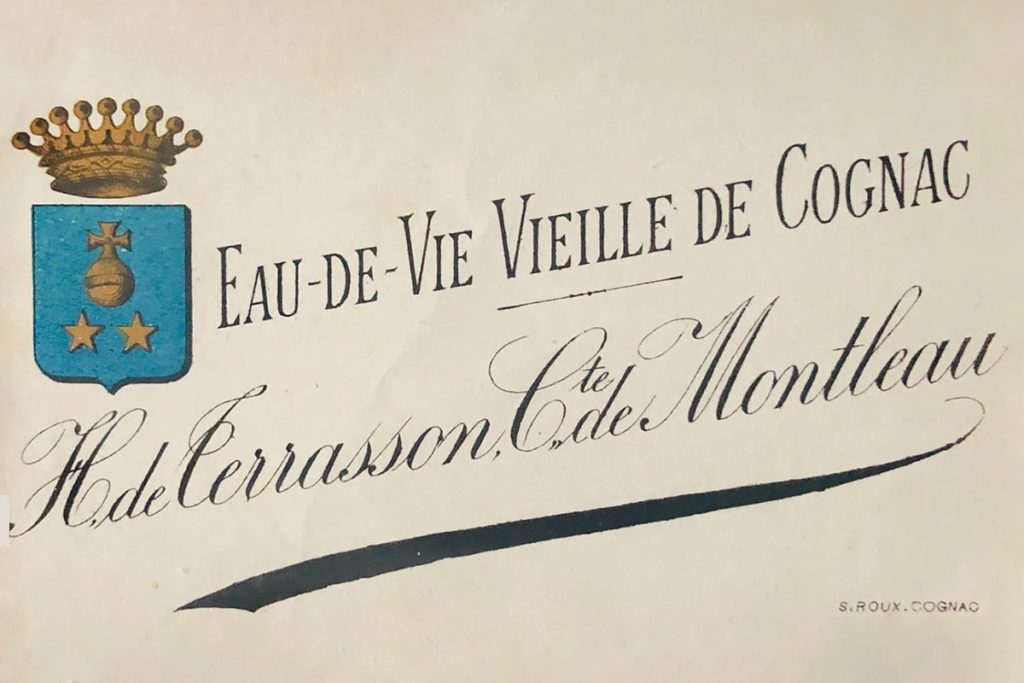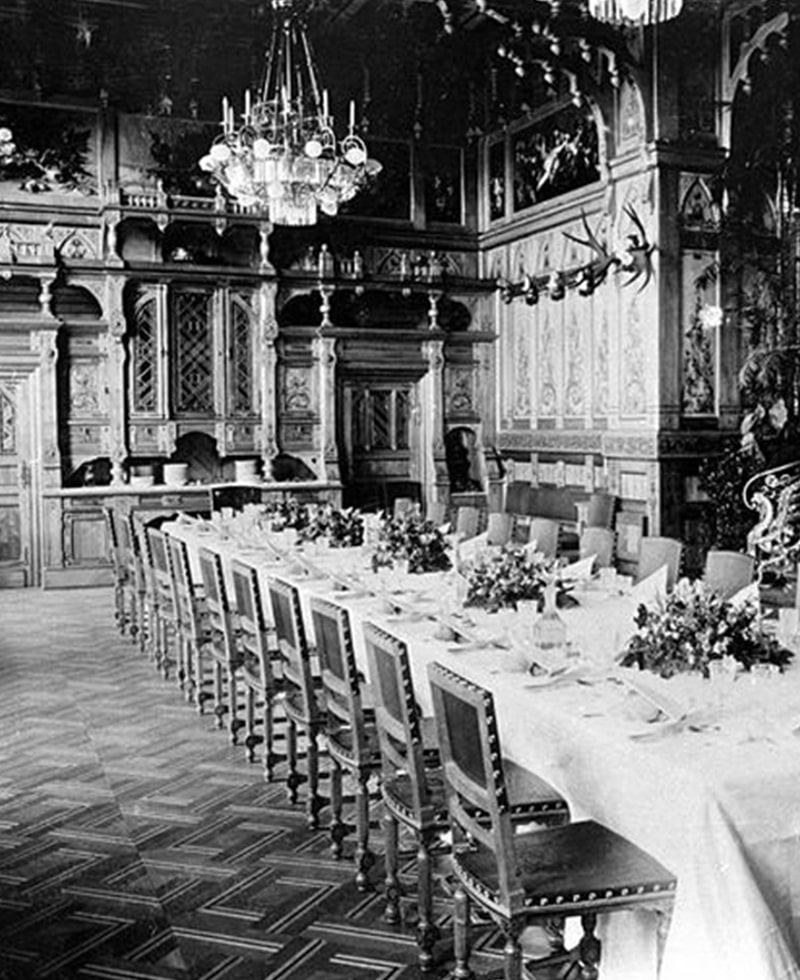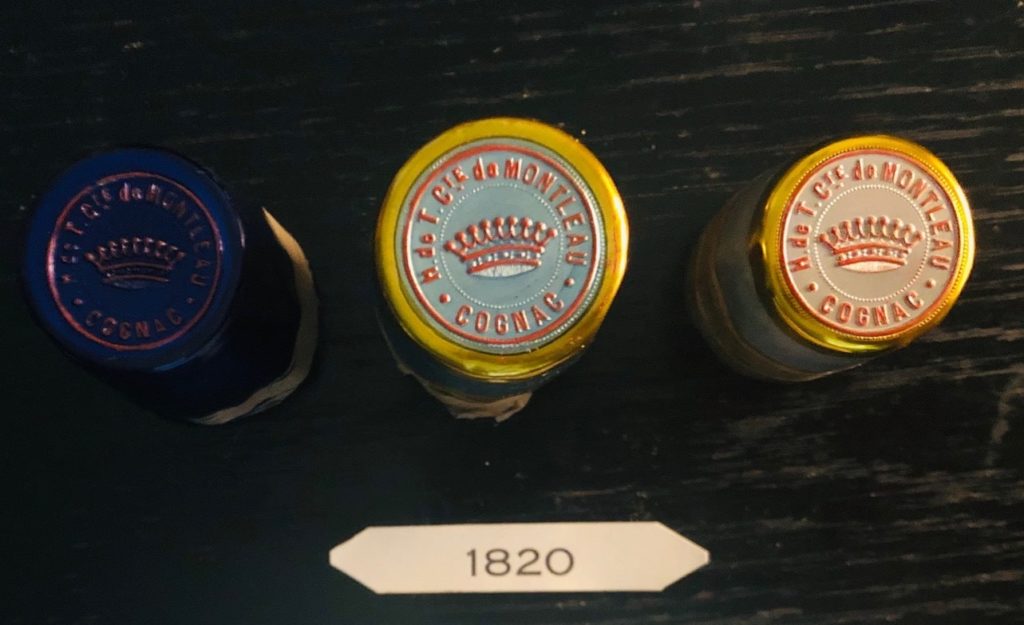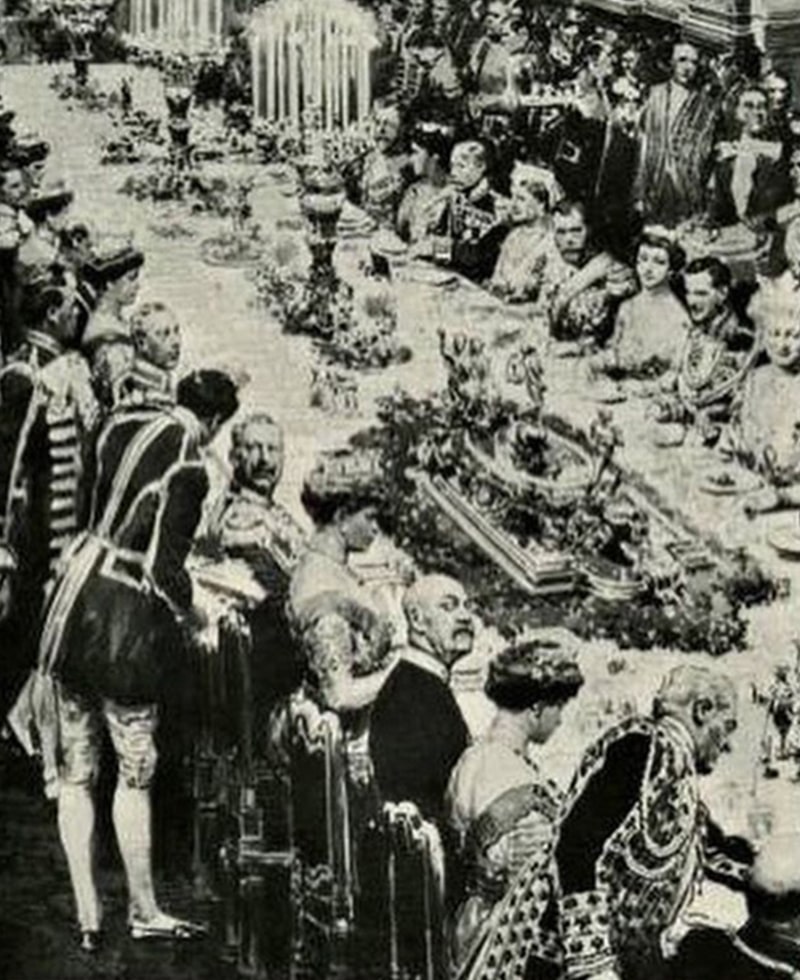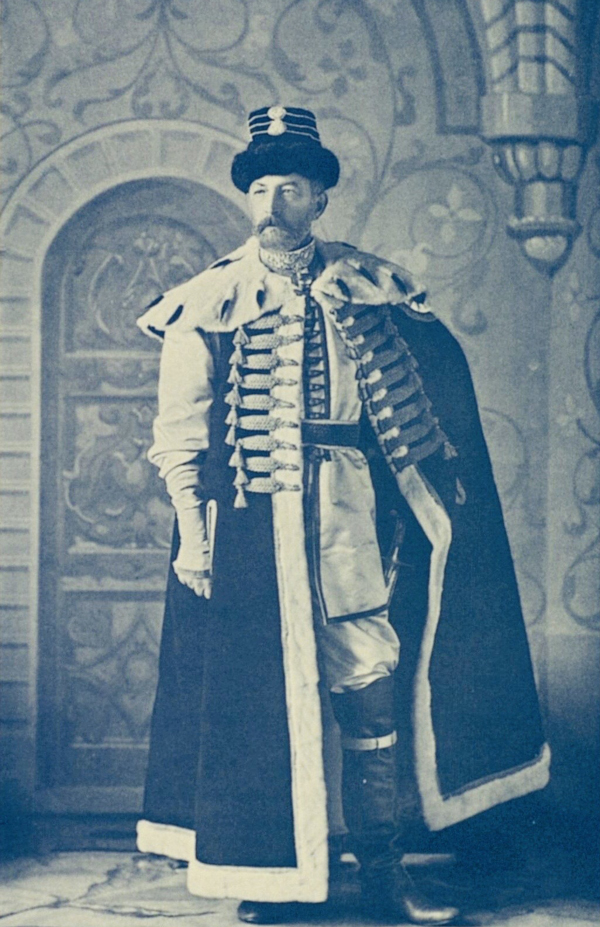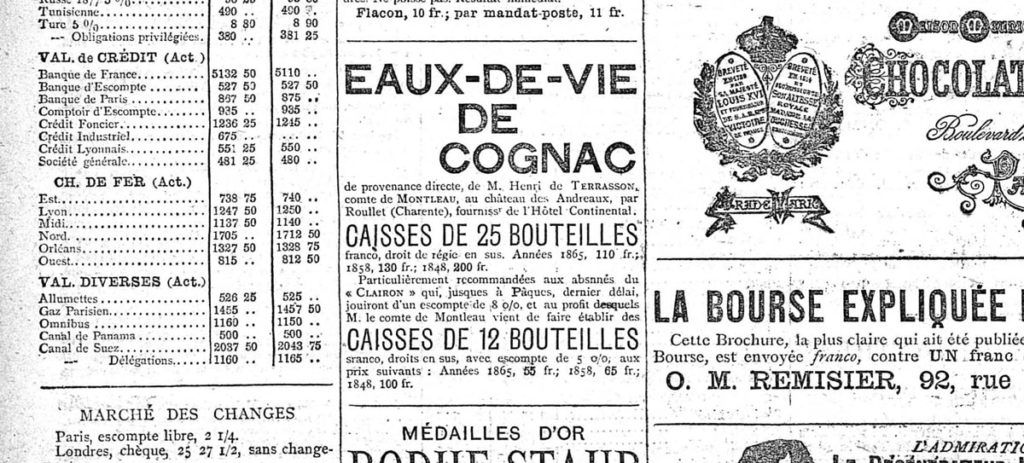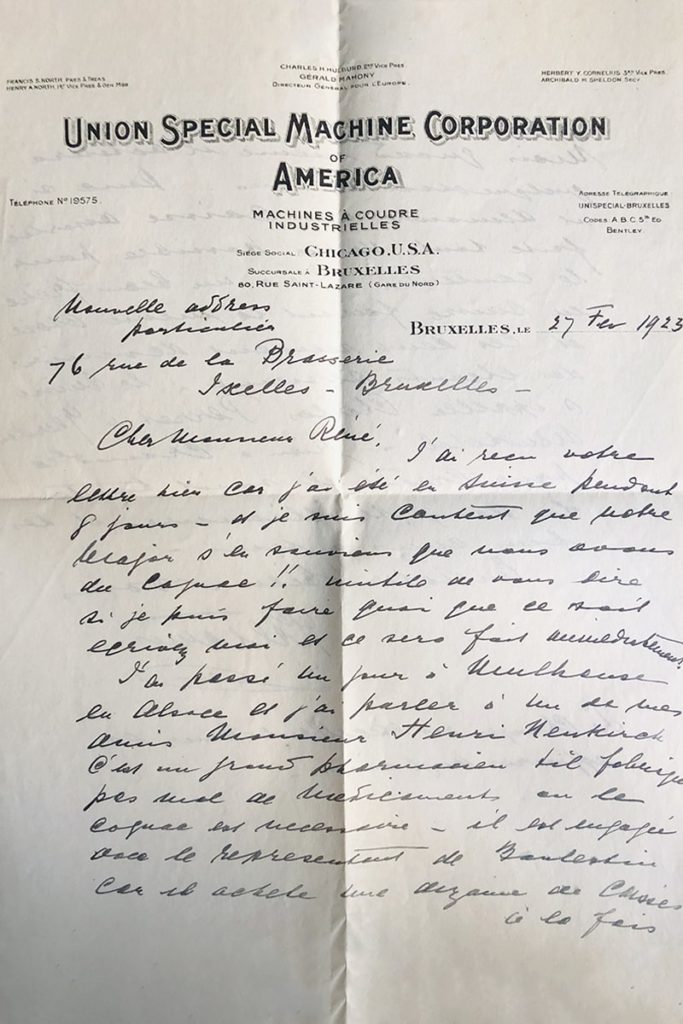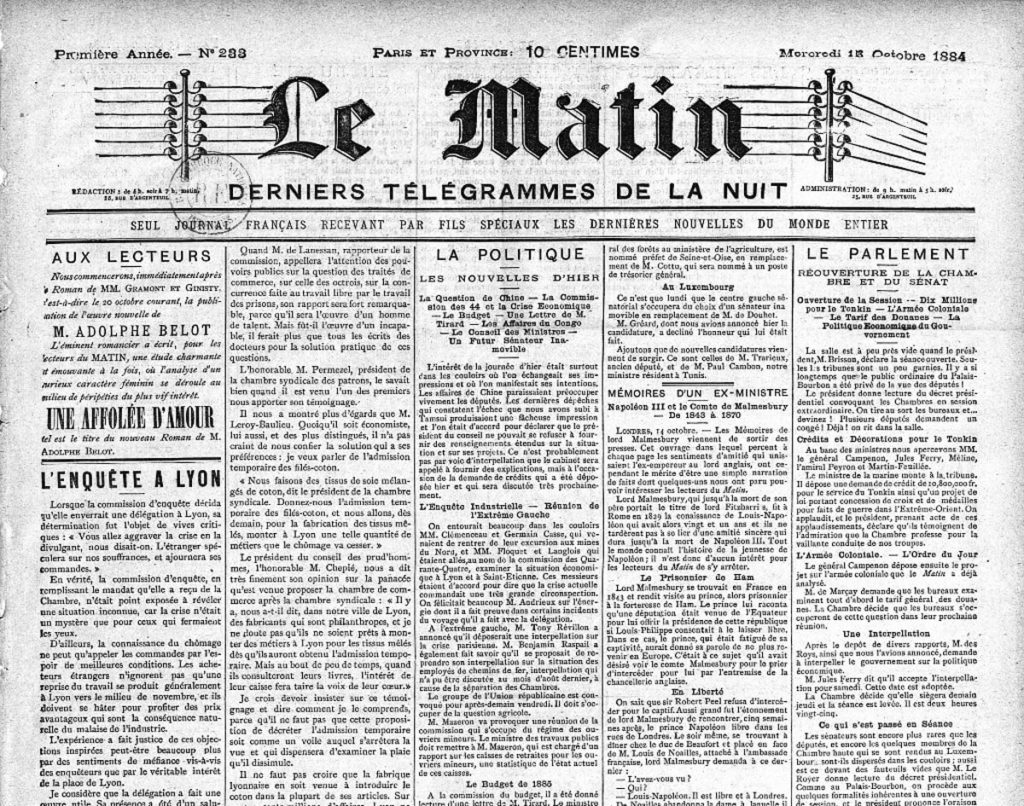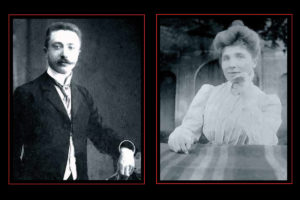After a marriage in 1695, the lands of the Andreaux were taken over by the Terrasson de Montleau family, one of whose members, VALENTINE, born in 1870, made a strong impression through her personal investment in the work on the vineyards and her sense for business, to the point that the company’s Eaux-De-Vie, transformed into Cognac by the magic of the still and a double distillation, reinforced the noble name on this site, now the property of the family, with Alexandre de TERRASSON de MONTLEAU, MP for Charente and mayor of the same town in the 1820s. The heirs to the Cognac branch of the Comtes Terrasson de Montleau were still very much present at the close of the 20th century.
The origins of Terrasson du Comte de Montleau Cognac can be traced back to the 18th century, when Cognac was still known as “Eaux-De-Vie”. The family wine estate was already very modern for the period, extending over some sixty hectares, with three distilleries and two large wine storage cellars. The first distillery was built in 1743. The brand became the best-seller of the major Cognac houses and was served at all the royal courts of Europe.
Valentine, an Exceptional Woman
The Terrasson de Montleau company began to develop its “Eaux-De-Vie De Cognac” in the early 19th century. During Comte Gerald de Montleau’s father’s lifetime, the remains of the little train, rails and wagons which ran through the vines could still be seen. During the 19th century, journeys to faraway destinations were made by rail. The Cognac barrels were designed with a false bottom, so that they could not easily be pierced to extract the precious nectar. At the end of the 19th century, robbers still had no hesitation in attacking freight trains.
Terrasson de Montleau Cognac was sold in the most prestigious Parisian hotels, such as the famous Hôtel Continental. Incidentally, in 1883, the Director of this establishment, Mr E. Leguay, described it as “incredibly delicate with delicious flavours infusing it with ever-so rare balance”.
The "Grand Diplôme d’honneur avec Médaille d’Or"
In Lyon in 1885, Henry Terrasson Comte de Montleau was awarded the “Grand Diplôme d’honneur” and the “Médaille d’Or”, the highest distinction, for the excellence of his cognacs.
Booklet of 1883
From all over France and overseas, I have received letters filled with praise, proving that the reputation of my Eaux-de-vie de Cognac is built on solid foundations.
I will not speak here about correspondence that has a real value only for myself, but I would like to make an exception for the Directeur of the Hôtel Continental in Paris, the amiable M. E. Leguay, whose great skills in this subject cannot be questioned. From his letter dated 19 August 1883, I will copy the following passage relating to my Fines Champagnes: “……incredibly delicate with delicious flavours infusing it with ever-so rare balance……”.
A few clients, through repeated requests, have sought to impose conditions on me that have little connection with the high prices of good eaux-de-vie. Within reasonable limits, I have given in to their wishes, taking inspiration from this thought: “that the price must always be directly related to the quality of the products sold.”
GENERAL INFORMATION
The eaux-de-vie that are on sale are already old and can be drunk at once. This leads me to recommend the use of crates, the only way to make any kind of fraud impossible.
However, for clients who request it, deliveries can be made in casks of 25.50.110 litres and over.
We also deliver in customised crates
Shipments are made Franco to the client’s homes in cities, and to the nearest train station in the country.
For overseas deliveries, Franco as far as the border.
A crate of twelve bottles is sold at half the price of a crate of twenty-five bottles.
If, exceptionally, crates of one to six bottles are delivered as samples, postage is paid by the buyer.
Payment within forty days by bank draft, postal order or cheques, etc.
Excise duties must always be paid by the buyer.
Painted sheet metal from the 19th century of 1865
Claim, painted sheet metal from the 19th century.
“Supplier in Paris of the Continental Hotel of the Grand Hotel.”
Letters of the Count of Benckendorff Marshal of the Court of H.M. the Emperor of Russia, Saint Petersburg, Winter Palace 1894
Your Lordship,
A few days ago, a few bottles of eau de vie de cognac came into my hands, which a friend bought me in Paris and which seemed to me excellent.
Since the labels on these bottles bear your name, I decided to contact you directly. Would you be kind enough to tell me how I could obtain a fairly considerable amount of this eau de vie for the Imperial Court, and whom I should contact to conduct the transaction?
Yours sincerely.
Comte de Benckendorff, Marshal of the Court of His Majesty the Emperor of Russia
PS: I know that the Eau de vie I tasted is served at the Cercle de l’Union club in Paris.
Letter from His Highness Prince Urosov to the Comte de Montleau
Dear Sir,
Prince Urusov informs us that, on his own account and the account of some of his friends, there are still 200 bottles of Cognac 1820 in your premises, and he would like them to be delivered to us. Wishing to please him, we have agreed to accept this lot of 200 bottles and would ask you to deliver them to us at your convenience, with the same labels, packaging and crate markings, etc., as you did for the last shipment of the same Cognac you made to us.
At the same time, we repeat that we would be grateful if you could tell us the exact quantity of this particular Cognac you still have in stock, because, if the stocks are practically inexhaustible (as seems to be the case), we will not have the same interest in selling the article. To be frank, if the quantity were not too large, we might be ready to buy the entire stock, since we do not wish to have any competitors selling this article.
Please provide us with information on this point. We look forward to hearing from you. Yours faithfully.
London, February 26, 1926, reservation of Prince Urusov's stock
Dear Sir,
Thank you for your letter dated 20 February, in which you ask us to deliver as soon as possible the remaining 300 bottles of Cognac 1820 that you reserved in your letter of 10 December 1923.
Since that date we have received two shipments with a total of 318 bottles, but we presume that the shipment of March 1924 was the remainder of what we had previously set aside from the stock of Prince Urusov, and consequent:y there should be 180 bottles left from the reserve of December ’23.
Yours faithfully.
Letter courvoisier 7 June 1920
Dear Sir,
In line with our agreement, we would like to inform you that we have shipped from the Comte de MONTLEAU the following:
- 1000 bottles of Cognac 1875
- 4 hectolitres of the same Cognac, type A. in exchange for a cheque for 50,000 fr. (fifty thousand francs, as agreed).
We look forward the receiving your reply by letter and thank you in advance. Yours faithfully.
Letter EHRMANNS 12 March 1923
Dear Sir,
We have been corresponding with S.A. le Prince Ouroussow about purchasing the stock of Cognac 1820, 1848 and 1875 that is in your cellars, and which you are holding, if we understand correctly, on behalf of some of your former Russian clients.
As we told the Prince, before deciding to acquire the stock it it essential for us to receive a crate of 12 bottles of 1820 and a crate of the same quantity of 1848.
Please send the crates to the following address:
Messrs. Ehrmanns,
The Waterloo Bottling Co ., Ltd. ,
228.230, Waterloo Station Approach,
Westminster Bridge Road,
LONDON, S.E.L ,
While continuing to address all correspondence to our offices in Finsbury Square. Yours faithfully.
Letter EHRMANNS 29 May 1923
Dear Sir,
A few years ago, we bought a very fine and very old Cognac that was sold as dating from 1811. The Cognac was supplied to us in old bottles of the Burgundy type. Could you, if necessary, procure similar bottles for us and use them for some of the Cognac in question?
We would like to point out that this is not a one-off transaction made by an occasional buyer; you are dealing with a company of some importance that will make regular orders at prices that are likely to interest you.
Yours faithfully.
250 years of history ...
Origin of the establishment
Portrait of René de Terrasson Comte de Montleau, photograph 1905
Valentine de Terrasson de Montleau – 1870-1937, the ANDREAUX
The first distillery was built in 1743, with three fires and two large cellars. The family vineyard, already very modern for the time, extended over about sixty hectares. In the days of Cte Gerald de Montleau’s father, there were still the remains of a small train, rails and wagons that served the vineyards. In the 19th century, faraway expeditions were carried out by rail. For Russia, the boxes had been designed with a double bottom so that they could not be easily pierced and the nectar extracted. At the end of the 19th century, the Cossacks did not hesitate to attack freight trains.
The Cognac Terrasson Cte de Montleau, located in the Petite Champagne and Fins Bois crus, developed and became the best-seller of the official supplier to leading merchant houses, to the Court of England, to the Imperial Court of Russia and, in particular, to Tsars Alexander III and Nicolas II.
Letters and correspondences provide evidence that the greatest Russian princely dynasties would place orders for the famous Cognac Terrasson Cte de Montleau, especially the 1820 vintage, highly-valued and sought after at the beginning of the 20th century (Letter from Prince Serge Ouroussov dating from 1924, and from the Comte de Benckendorff, Marshal of the Court of His Majesty the Emperor of Russia, Winter Palace of Saint Petersburg dating from 1894).
Proposed in the most prestigious Parisian hotels, Monsieur Leguay, Director of the Hotel Continental described it in 1883 as: “incredibly delicate with delicious flavours infusing it with ever-so rare balance”.
In The Home of the Last Tsar – Romanov and Russian History, the Tsar’s table during the reign of Nicolas II is described in great detail: After dinner coffee was served in the Portrait Hall with rich tables set with piles of chocolates, delicate sponge cakes of different sorts and shapes, and candies made in the Imperial confectionery. On Separate tables there were also an assortment of liqueurs and brandies. Court brandy was usually the brandy of 1875 from Montleau (Henry Terrasson Comte de Montleau).
In Lyon in 1885, Henry Terrasson Comte de Montleau was awarded the “Grand Diplôme d’honneur” and the “Médaille d’Or”, the highest distinction, for the excellence of his cognacs.

